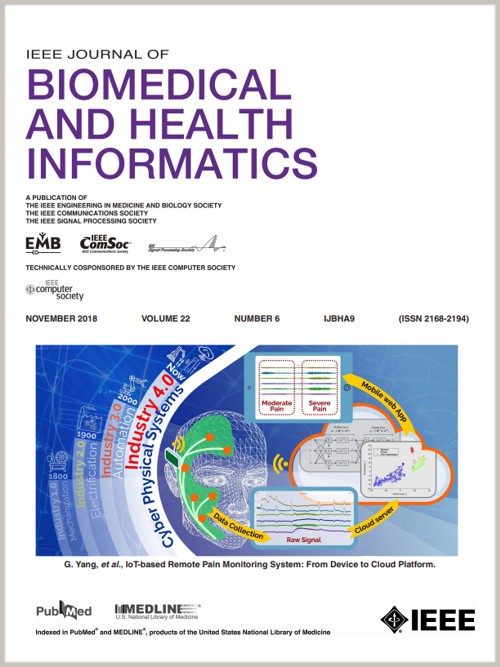Autoencoder-Based Detection of Insulin Pump Faults in Type 1 Diabetes Treatment
IF 6.7
2区 医学
Q1 COMPUTER SCIENCE, INFORMATION SYSTEMS
IEEE Journal of Biomedical and Health Informatics
Pub Date : 2024-12-16
DOI:10.1109/JBHI.2024.3518233
引用次数: 0
Abstract
Individuals with type 1 diabetes (T1D) require lifelong insulin replacement to compensate for deficient endogenous insulin secretion, which would otherwise result in abnormal blood glucose levels. In recent years, significant investments have been made to improve T1D management, leading to the widespread adoption of accurate technology such as continuous glucose monitoring (CGM) sensors and automated insulin delivery systems. However, malfunctions in these devices, particularly pump systems, can cause undesirable interruptions of insulin delivery posing significant safety risks if not promptly addressed. Due to the low frequency of these episodes, developing accurate algorithms to identify insulin pump faults remains a challenge. To address these issues, this paper proposes a novel approach for detecting insulin pump faults (IPFs) by combining the ability of a long short-term memory (LSTM) autoencoder to extract features, with the strength of random forest to distinguish between anomalous and normal patterns. This method was developed and evaluated using data from 100 subjects, simulated over 90 days with the UVa/Padova T1D Simulator, an FDA-approved nonlinear computer simulator of T1D physiology. In the test set, the proposed algorithm identified the 93% of the total faults, while raising 2 false alarms in 3 months on average. These findings suggest that deep learning algorithms can enhance the safety and reliability of insulin pump systems, contributing to more effective therapeutic technologies.求助全文
约1分钟内获得全文
求助全文
来源期刊

IEEE Journal of Biomedical and Health Informatics
COMPUTER SCIENCE, INFORMATION SYSTEMS-COMPUTER SCIENCE, INTERDISCIPLINARY APPLICATIONS
CiteScore
13.60
自引率
6.50%
发文量
1151
期刊介绍:
IEEE Journal of Biomedical and Health Informatics publishes original papers presenting recent advances where information and communication technologies intersect with health, healthcare, life sciences, and biomedicine. Topics include acquisition, transmission, storage, retrieval, management, and analysis of biomedical and health information. The journal covers applications of information technologies in healthcare, patient monitoring, preventive care, early disease diagnosis, therapy discovery, and personalized treatment protocols. It explores electronic medical and health records, clinical information systems, decision support systems, medical and biological imaging informatics, wearable systems, body area/sensor networks, and more. Integration-related topics like interoperability, evidence-based medicine, and secure patient data are also addressed.
 求助内容:
求助内容: 应助结果提醒方式:
应助结果提醒方式:


